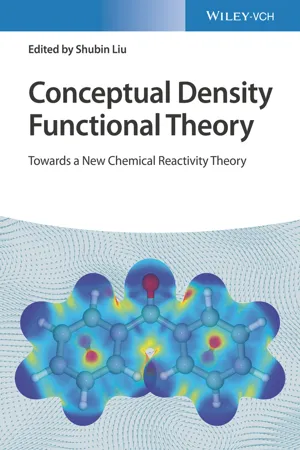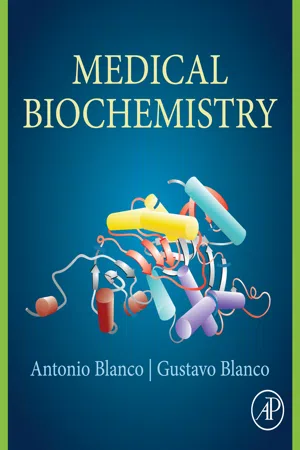Chemistry
Energy Profile
An energy profile in chemistry refers to a graphical representation of the energy changes that occur during a chemical reaction. It typically shows the energy of the reactants, the activation energy, and the energy of the products. The energy profile helps to visualize and understand the energy changes that take place as a reaction progresses.
Written by Perlego with AI-assistance
Related key terms
Related key terms
1 of 4
Related key terms
1 of 3
3 Key excerpts on "Energy Profile"
- Albert S. Tarendash(Author)
- 2021(Publication Date)
- Barrons Educational Services(Publisher)
a, is the minimum energy needed by the reactants in order for a reaction to occur.Let us consider the exothermic reactionReactants → Products + Heatand the accompanying potential energy diagram for this reaction. We note that the potential energy of the system is plotted along the y-axis, and a quantity called the reaction coordinate (which monitors the progress of the reaction) along the x-axis.Reaction Profile of an Exothermic ReactionLet us trace along the curve in the diagram and describe the events that occur during the course of this reaction:- At the beginning, the reactants contain a specific amount of energy (potential energy of reactants).
- Additional energy is absorbed by the reactants and serves to break certain bonds and initiate the reaction (activation energy).
- As the reactants absorb energy, they are transformed into an intermediate known as the activated complex.
- As the activated complex is converted into products, new bonds are formed and energy is released.
- The products also contain a specific amount of energy (potential energy of products).
- Since more energy is released than absorbed, the products are at a lower energy state than the reactants and the overall reaction is exothermic.
- The difference between the energy of the products and the energy of the reactants is the heat of reaction, ΔH.
Many exothermic reactions are self-sustaining; that is, they continue to occur because the heat they liberate provides the activation energy for the reactants. A burning match is an example of a self-sustaining reaction.Now let us consider the endothermic reactionHeat + Reactants → ProductsReaction Profile of an Endothermic Reactionand the accompanying potential energy diagram for this reaction. The sequence of events in an endothermic reaction is exactly the same as the sequence of events in an exothermic reaction. At the end of the reaction, however, less energy is released than absorbed and the products are at a higher- eBook - ePub
Conceptual Density Functional Theory
Towards a New Chemical Reactivity Theory
- Shubin Liu(Author)
- 2022(Publication Date)
- Wiley-VCH(Publisher)
Therefore, a complete characterization of a chemical reaction necessarily requires the knowledge of these three aspects. Figure 23.1 The partition of the reaction coordinate provided by the reaction force analysis and projected on a schematic Energy Profile of an elementary step along the reaction coordinate. The pair { } are the reaction and activation energies. The bars on each reaction region indicate qualitatively the expected intensity of primary (blue), secondary (pink), and tertiary (black) chemical events along the reaction coordinate. Reaction rate and the activation energy are connected through the Arrhenius equation (23.1) where is the rate constant, is the pre‐exponential coefficient often referred to as the frequency factor, is the universal gas constant, and is the temperature. More sophisticated theories have been developed later being the most important one the Eyring, Polanyi, and Evans TST [ 4, 5 ] based on the assumption that activated complexes are in quasi‐equilibrium with the reactants. This leads to the Eyring equation[ 6, 7 ] (23.2) where is the Boltzmann constant, is the Planck constant, is the frequency of an specific vibrational mode (chemical event) responsible for converting the activated complex to the product, and is the activation Gibb's free energy. Therefore, the knowledge of the act ivation energy of a chemical reaction produces fundamental kinetic information such as the time needed to produce the chemical transformation. In the past, due to the impossibility to get reliable estimation of activation energies, empirical relationships between kinetic and thermodynamic data have been suggested. A linear relationship between the activation energy and the reaction energy of an elementary reaction is known as Brönsted–Evans–Polanyi (BEP) principle [ 8, 9 ]: (23.3) where is a reference energy and is the Brönsted coefficient that measures the resemblance between the transition state and the product - eBook - ePub
- Antonio Blanco, Gustavo Blanco(Authors)
- 2017(Publication Date)
- Academic Press(Publisher)
Fig. 7.2 shows curves for the energy changes in a reaction without and with the aid of a catalyst.While a catalyst increases the reaction rate, it does not alter the net energy change; the value of ∆G and the equilibrium constant are unchanged whether the reaction is catalyzed or not.Summary
Thermodynamics is the branch of physics that deals with energy and its transformations. Energy changes in biochemical reactions obey fundamental principles of thermodynamics, are expressed in two laws:First law. The total energy of the universe remains constant .Second law. The entropy of the universe increases .Energy changes occur in chemical transformations. Heat is one of the most common forms of energy and it is easy to measure.At constant pressure and temperature, the change in heat is the change in enthalpy (∆H ).Energy change (∆ E) equals ∆ H when no work is produced in the system.Free energy ( G) is the fraction of released energy available to perform work.Free energy change (∆ G) of a reaction is given by the equation: ∆G = ∆H – T · ∆S .T is absolute temperature and ∆S , entropy change, corresponding to energy that is not available to perform work.Open system
Index pages curate the most relevant extracts from our library of academic textbooks. They’ve been created using an in-house natural language model (NLM), each adding context and meaning to key research topics.
Explore more topic indexes
Explore more topic indexes
1 of 6
Explore more topic indexes
1 of 4


